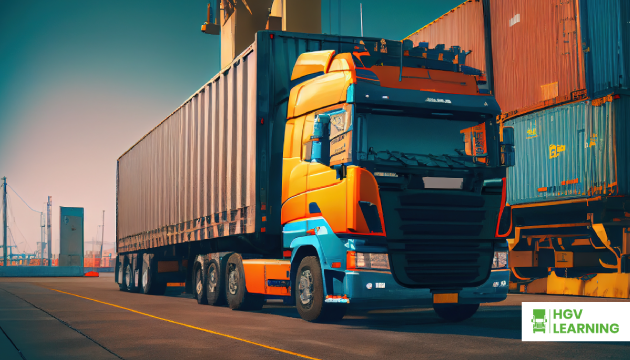Introduction: The Road to Mastering Artic Lorries
Embarking on a career in driving artic lorries represents a challenging yet rewarding journey. These large and complex vehicles, essential to the logistics and transportation industry, require a specific set of skills and qualifications. In this comprehensive guide, we will explore the essential qualifications and training needed to successfully drive artic lorries, ensuring you are well-prepared for a thriving career in this field.
1. Understanding Artic Lorries:
Before diving into the qualifications and training, it’s important to understand what sets artic lorries apart from other heavy goods vehicles. Artic lorries, or articulated lorries, consist of a tractor unit and a detachable trailer. Their size and articulated nature demand advanced driving skills and a deep understanding of vehicle mechanics. We will explore the specifics of these vehicles, their uses, and the skills required to handle them effectively.
2. Essential Qualifications for Driving Artic Lorries:
Driving an artic lorry is not something you can just jump into. It requires obtaining specific qualifications that demonstrate your ability to safely and efficiently handle these large vehicles.
- Obtaining the Category C+E Licence: The first step towards becoming an artic lorry driver is to acquire the Category C+E licence. This licence is specifically designed for drivers operating vehicles over 3.5 tonnes with a trailer over 750 kg. The process involves completing both theory and practical driving tests that are more complex than those for standard car licences.
- Driver Certificate of Professional Competence (CPC): In addition to the C+E licence, drivers must also complete the Driver CPC, a qualification mandatory across the EU for all professional drivers of lorries, buses, and coaches. This involves initial qualification and periodic training every five years, ensuring that drivers maintain high standards of driving and road safety.
- Specialised Training Programs: Specialised training programs are often recommended for those looking to drive artic lorries. These programs cover areas such as advanced driving techniques, vehicle maintenance, load securing, and fuel-efficient driving. This training not only enhances safety and efficiency but also boosts the driver’s confidence in handling large and complex vehicles.
3. Advanced Driving Skills and Training for Artic Lorries:
Mastering the art of driving artic lorries involves much more than just knowing how to operate the vehicle. It encompasses a range of advanced skills that ensure safety, efficiency, and reliability.
- Maneuvering and Handling: Due to their size and articulated nature, artic lorries require precise maneuvering skills, particularly in tight spaces or congested areas. Drivers must be adept at reversing, coupling and uncoupling trailers, and navigating busy roads without compromising safety.
- Load and Weight Management: Understanding how to properly load and distribute weight in the trailer is crucial. Incorrect loading can lead to safety issues like vehicle instability or increased wear and tear. Training programs often include practical guidance on load management to ensure compliance with legal weight limits and road safety.
- Dealing with Adverse Weather Conditions: Driving large vehicles like artic lorries in adverse weather conditions poses additional challenges. Drivers need to be trained in handling these vehicles during heavy rain, snow, high winds, and other challenging weather conditions to maintain control and ensure safety.
- Emergency Procedures and First Aid: Knowing how to respond in case of emergencies, including vehicle breakdowns or road accidents, is an essential skill for any artic lorry driver. Basic first aid knowledge and understanding emergency procedures can be life-saving in critical situations.
4. Health and Safety Considerations in Artic Lorry Driving:
Ensuring the health and safety of artic lorry drivers is paramount, not just for the individual driver but also for public safety. This segment of training and daily practice focuses on essential protocols and habits.
- Rigorous Safety Protocols: Artic lorry drivers must adhere to stringent safety regulations to prevent accidents and ensure road safety. This includes compliance with driving and rest hours as stipulated by law, regular vehicle inspections, and adherence to traffic rules. Training often encompasses understanding these regulations in-depth and applying them in daily operations.
- Physical and Mental Wellbeing: The physical demands of driving an artic lorry, coupled with long hours and the stress of navigating large vehicles, can take a toll on a driver’s health. Emphasis is placed on ergonomics, maintaining good physical health through exercise and proper nutrition, and strategies for mental wellbeing, such as stress management and maintaining a positive work-life balance.
- Regular Health Check-ups: Routine medical examinations are crucial for artic lorry drivers. These check-ups monitor a driver’s fitness and ability to handle the physical and mental demands of their job. Issues such as vision impairment, sleep disorders, and chronic health conditions need to be assessed regularly.
- Safety Training and Drills: Continuous safety training, including emergency drills and first-aid training, is essential. Such training ensures that drivers are prepared to handle emergencies effectively, whether they involve health issues, vehicle malfunctions, or on-road incidents.
5. Career Opportunities and Growth in Artic Lorry Driving:
A career as an artic lorry driver is not just about long journeys on the road; it opens up a range of opportunities for professional growth and development.
- Diverse Employment Opportunities: Artic lorry drivers are in high demand across various sectors, including logistics, construction, retail, and manufacturing. This demand offers drivers a choice of industries to work in, depending on their interests and career aspirations.
- Potential for Career Advancement: With experience and additional qualifications, artic lorry drivers can move into higher roles such as transport managers, driver trainers, or logistics coordinators. There’s also the potential to specialise in areas like hazardous material transport or temperature-controlled goods, which often command higher salaries.
- Self-Employment Opportunities: For those who prefer the freedom of being their own boss, becoming an owner-operator is an option. This path involves owning and operating your own lorry, which offers greater control over work schedules and potentially higher earnings, albeit with added responsibilities and overheads.
- International Work Prospects: Driving artic lorries can also open up opportunities for international travel, especially for drivers who are licensed and trained to operate in different countries. This aspect of the job can be appealing for those who enjoy travel and are interested in experiencing different cultures and work environments.
Conclusion: Steer Your Way to Success with Artic Lorry Driving
Embarking on a career in artic lorry driving is more than a professional choice; it’s a journey into a world of exciting challenges and rewarding opportunities. From gaining the necessary qualifications and skills to exploring diverse career paths and growth prospects, driving artic lorries offers a dynamic and fulfilling career. With dedication, continuous learning, and adherence to safety and health practices, you can not only achieve success in this field but also contribute significantly to the vital sector of transportation and logistics.
Are you ready to rev up your career in artic lorry driving? Whether you’re just starting or looking to advance your skills and opportunities, we are here to guide and support you every mile of the way. Contact us today to learn more about our training programs, get expert advice, and take the first step towards a thriving career in driving artic lorries.






